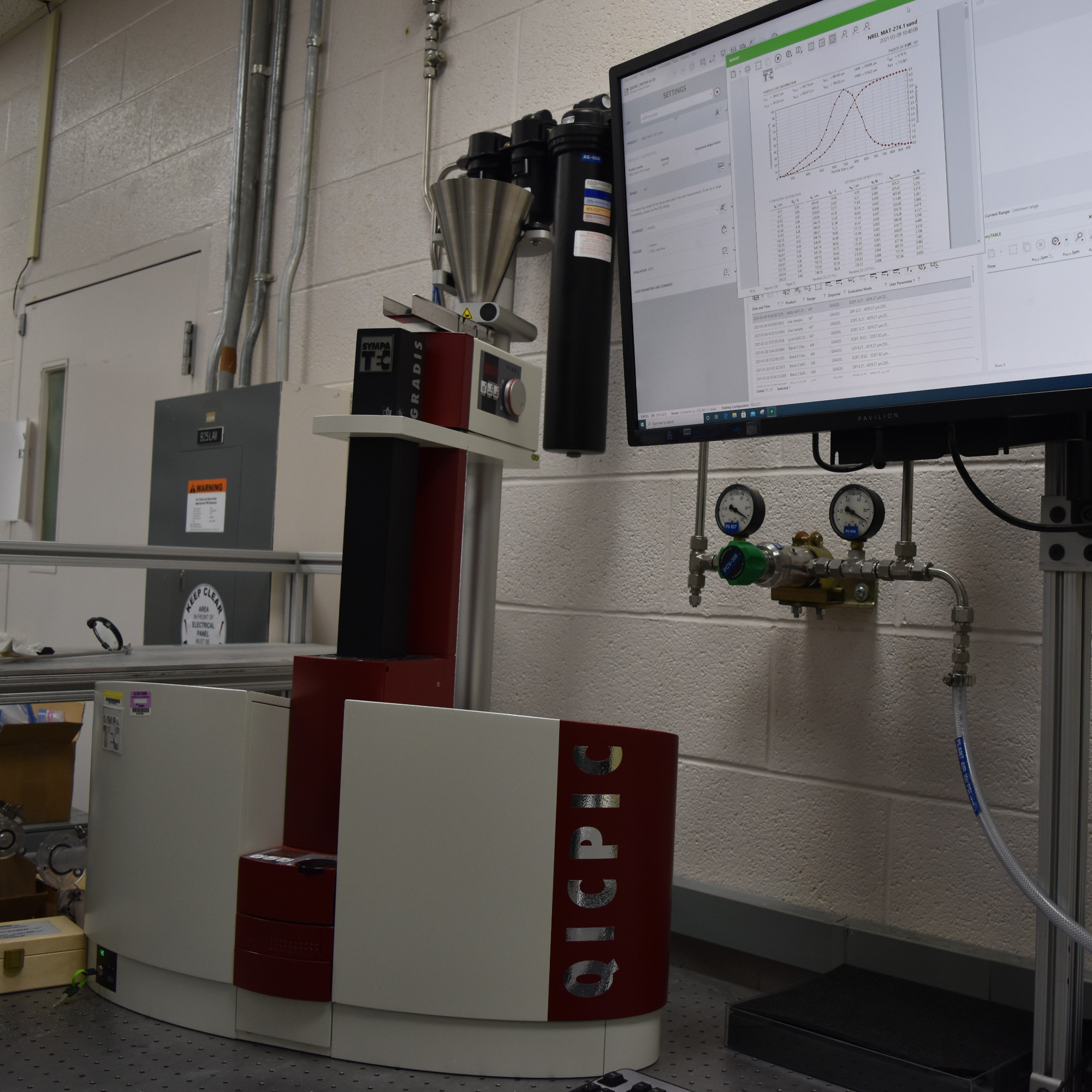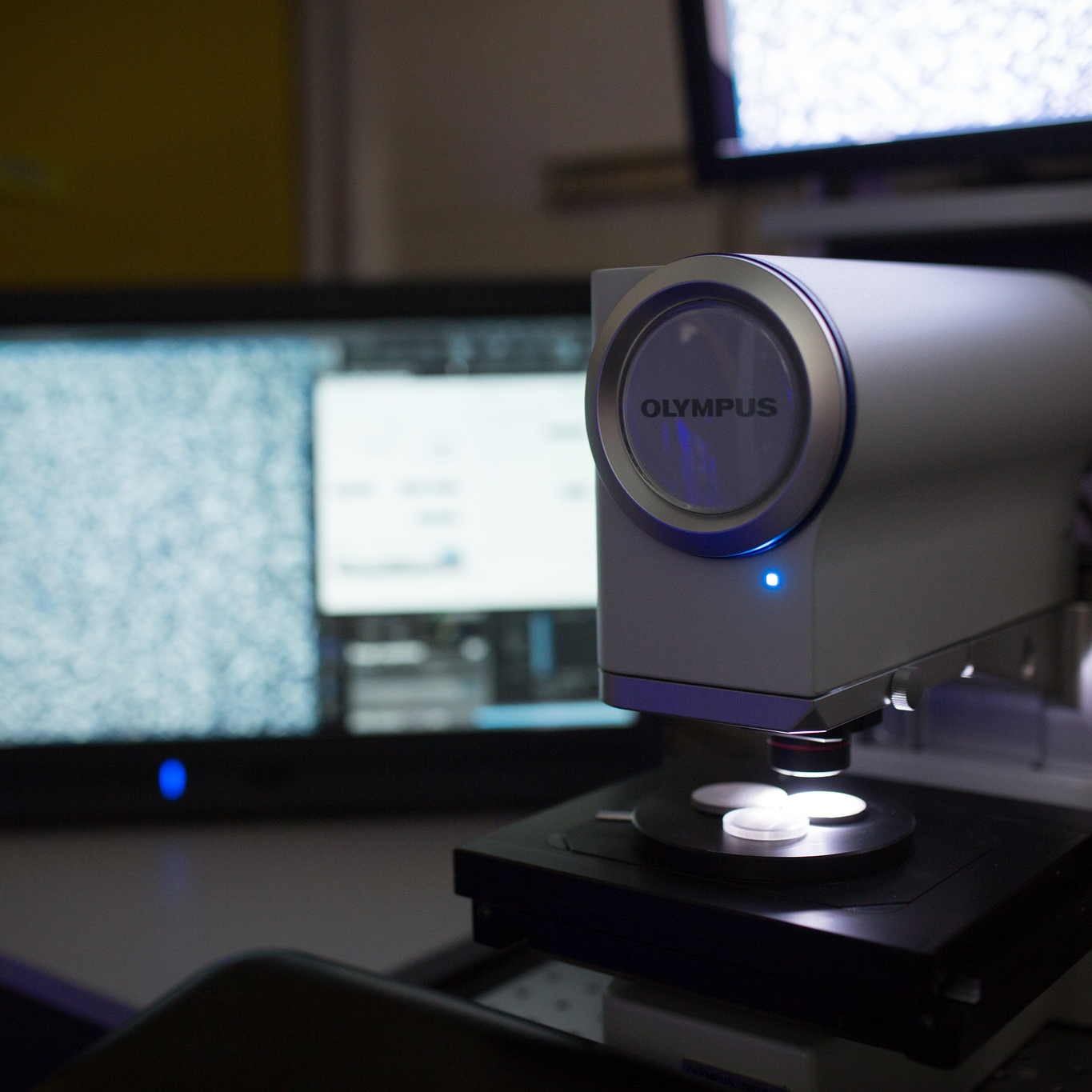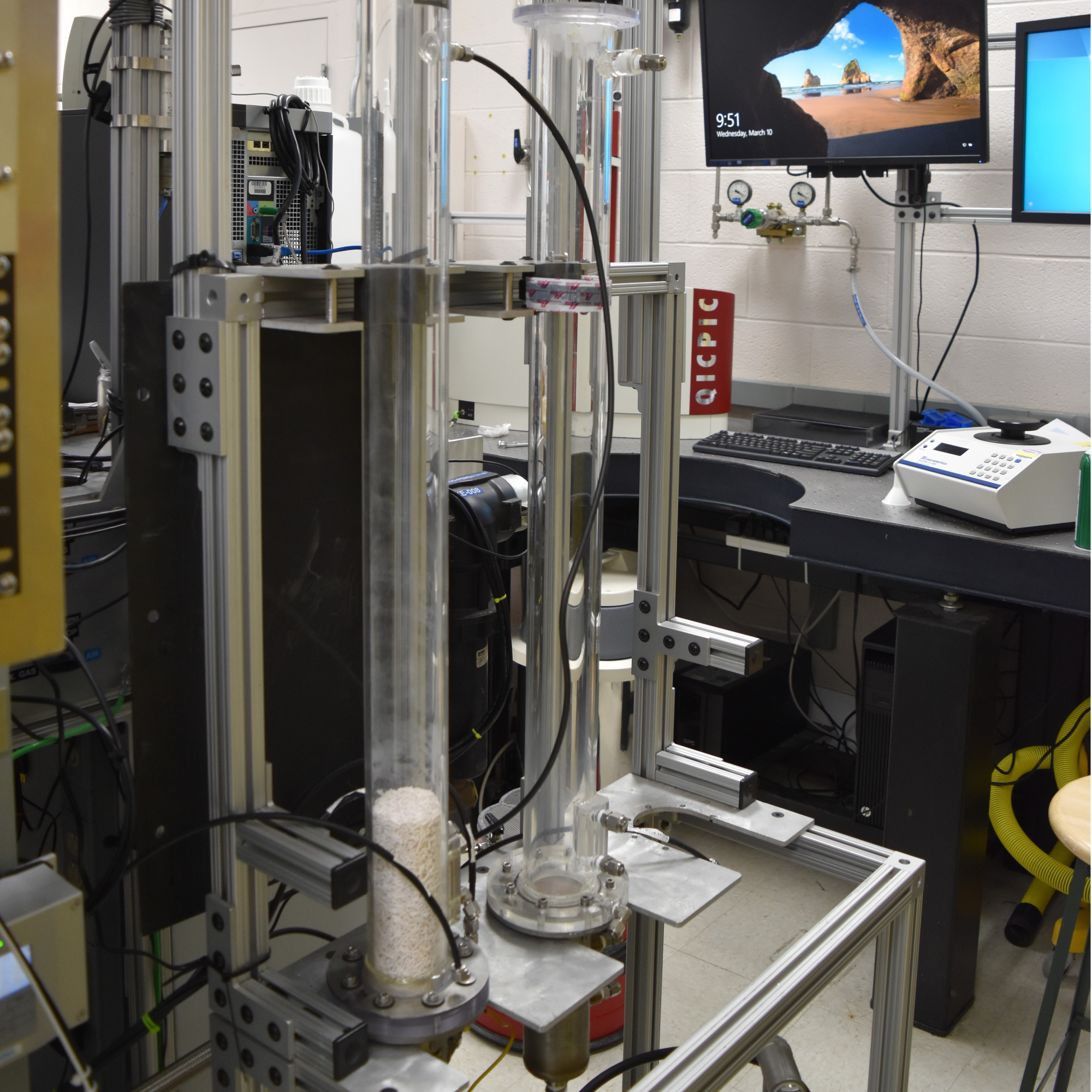Particle Characterization Program
Key physical properties and fluidization characteristics of the solid phase are important input parameters used in multiphase CFD models. Uncertainty in simulations can be greatly reduced by using accurate information describing individual particle and bulk flow characteristics. These characteristics include particle size, shape, densities, and fluidization properties. The Particle Characterization Program uses standardized methodologies to measure these individual and bulk flow characteristics. Qualitative information is also provided for the materials including bulk photos, photomicrographs, and the assignment of Geldart classifications. The test equipment and methodologies used in the Particle Characterization Program are shown below. The results of the characterization work are captured in NETL’s Granular Material Database and made available to MFS site registered users. The full set of raw and processed data for each granular material in the database is also available for further analysis.
Sympatec QICPIC Particle Analyzer
The QICPIC is a particle size-shape analyzer created by Sympatec to give a relatively fast analysis of millions of particles in a sample. There are different sampling methods used, which depend on the original sample size, to lower the percentage of uncertainty. These outputs include particle Sauter mean diameter, sphericity, aspect ratio, and fiber length. The parameter outputs from the QICPIC give a larger understanding of how these particles will behave in systems. These parameters also assist in determining further information about the particles, such as their Geldart Class.
Helium Pycnometer
The Helium Pycnometer uses the method of volume displacement to calculate the skeletal density of a sample. The small size of the helium particles allows for the injection of the gas in small pores within the particle. Only a small sample size, of approximately 15 mL, is required for the analysis. The parameter output from this equipment allows for the calculation of fluffed/packed void fractions, fluffed/packed bulk densities, and the calculation of porosity.
Olympus Microscope
This microscope allows for a more qualitative analysis of the particle sample. There are two lenses available, 5x and 50x. The higher powered 50x lens can be used for calculations for surface roughness and other particle surface analysis. The 5x is more commonly used for a visual representation of the particles’ size and shape. This high-powered, microscope comes along with a detailed program that allows for more freedom of analysis. The Extended Focus Imaging (EFI) is a function that captures images of the sample whose height extends beyond the depth focus of the objective and stacks the images together to create one in-focus image. This function also allows us to see a 3D image of the particles. The ‘Stitching’ function can also be used in conjunction of either the EFI or 3D analysis to get an image of a wider area of the sample space.
Minimum Fluidization Test Beds (Umf Beds)
The Umf beds are small scale fluidization columns with an inner diameter of 2.5 inches and overall height of 36-inches. These test sections consist of steel plenum chambers with sintered porous plate gas distributors and transparent cast acrylic riser sections to allow visual observation of gas-solid behavior during operation. They include multiple pressure tap locations to facilitate measure of differential bed pressures and are used for determination of particle minimum fluidization velocities. The onset of fluidization is determined by noting the inflection point for transition to fluidization. The clear walls allow for video imaging of bed behavior.





